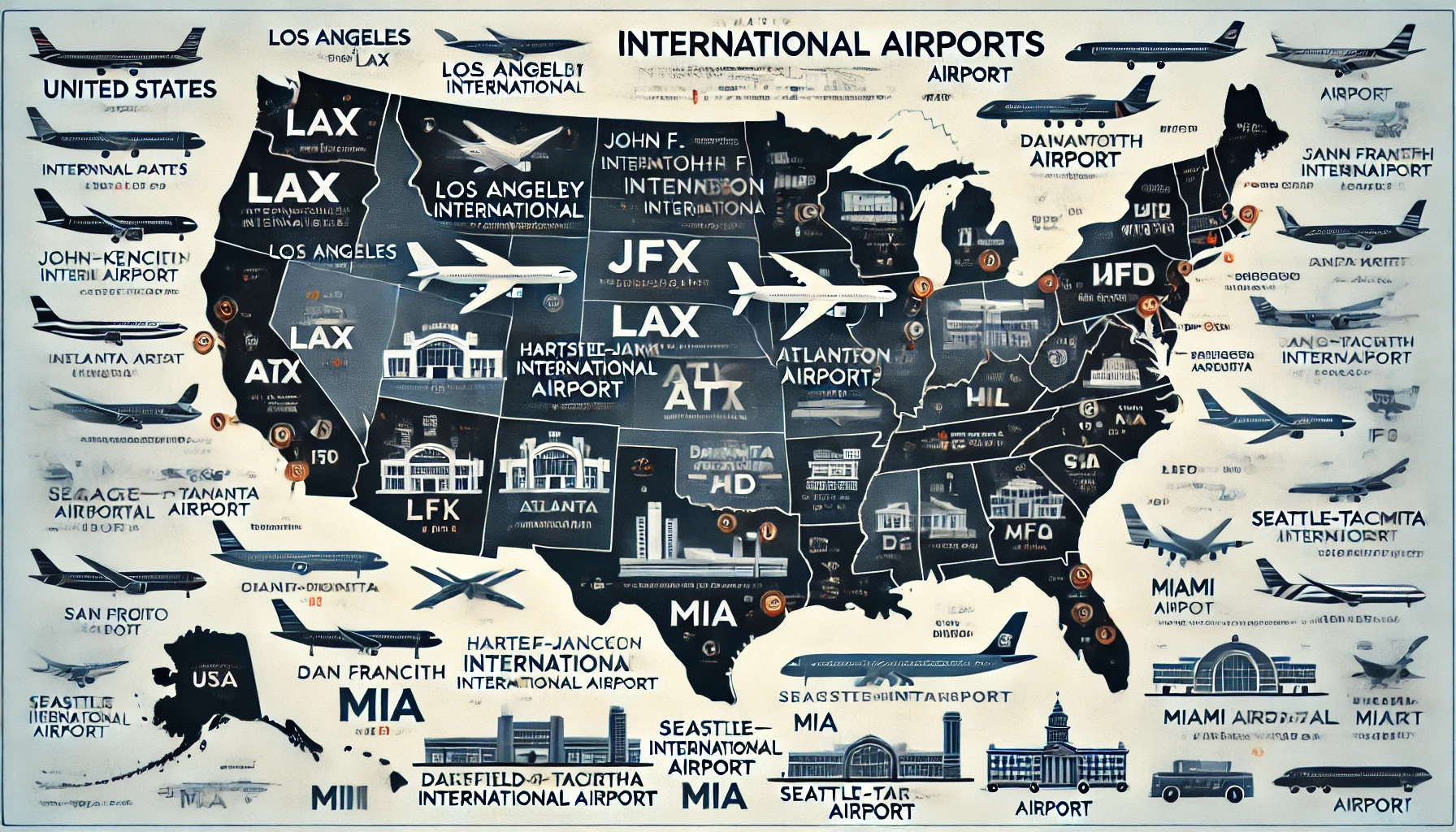When it comes to traveling abroad, understanding the ins and outs of international airports in the United States can make your journey smoother and more enjoyable. This guide will walk you through some of the most significant international airports in the country, their unique features, and tips to navigate them like a pro.
The Role of International Airports
International airports are gateways to the world, facilitating global travel by connecting various countries. They are equipped with customs and border control facilities, enabling passengers to travel internationally. These airports are typically larger than domestic airports and offer a wide range of amenities to accommodate travelers from different parts of the world.
Top International Airports in the United States
Hartsfield-Jackson Atlanta International Airport (ATL)
Hartsfield-Jackson Atlanta International Airport is not only the busiest airport in the world by passenger numbers but also a significant hub for international travel. Located in Atlanta, Georgia, ATL offers flights to numerous destinations across the globe. Its efficient layout and comprehensive services make it a favorite among travelers.
Key Features:
- Two parallel runways and a massive terminal complex.
- A wide range of dining and shopping options.
- Efficient security and customs processes.
Los Angeles International Airport (LAX)
Los Angeles International Airport is a primary gateway to and from the United States’ West Coast. Known for its iconic Theme Building, LAX serves as a major hub for international flights, particularly to Asia and the Pacific.
Key Features:
- Nine passenger terminals connected by a U-shaped roadway.
- Extensive amenities, including luxury lounges and dining options.
- Regularly upgraded facilities to enhance the passenger experience.
John F. Kennedy International Airport (JFK)
Located in Queens, New York, JFK is one of the busiest international airports in the United States. It serves as a major gateway for flights to Europe, Asia, and other continents, making it a crucial link in global air travel.
Key Features:
- Six passenger terminals with various airline alliances.
- A robust public transportation network, including AirTrain JFK.
- Numerous shops, restaurants, and services catering to international travelers.
Chicago O’Hare International Airport (ORD)
Chicago O’Hare International Airport is a central hub for both domestic and international flights. Known for its high passenger volume and numerous amenities, ORD connects the Midwest to the world.
Key Features:
- Four terminals with efficient connections.
- Extensive dining and shopping options.
- Excellent ground transportation links.
Dallas/Fort Worth International Airport (DFW)
Dallas/Fort Worth International Airport, situated between the cities of Dallas and Fort Worth, Texas, is another significant international gateway. It offers flights to numerous destinations across the globe and is known for its extensive amenities.
Key Features:
- Five terminals with a Skylink train for easy transfers.
- A wide array of dining, shopping, and relaxation options.
- Efficient customs and immigration services.
Navigating International Airports
Traveling through an international airport can be daunting, but with a few tips, you can make the process much smoother.
Tips for Navigating International Airports:
- Arrive Early: Allow plenty of time for check-in, security, and customs.
- Stay Informed: Keep an eye on flight status and gate changes via airport apps or information boards.
- Utilize Lounges: If you have access, airport lounges offer a comfortable place to relax before your flight.
- Stay Organized: Keep your travel documents, passport, and boarding pass easily accessible.
- Know the Amenities: Familiarize yourself with the airport’s layout and available services to make the most of your time there.
Enhancing the Passenger Experience
International airports continuously strive to enhance the passenger experience through various initiatives. These improvements not only make travel more enjoyable but also help airports stand out in a competitive market.
Innovations in Passenger Services
Many airports are implementing innovative technologies and services to improve the travel experience. For example, biometric screening and automated passport control can significantly reduce wait times. Additionally, airports are investing in better signage and wayfinding systems to help passengers navigate complex layouts more quickly.
Dining and Shopping Options
Modern international airports offer a vast array of dining and shopping options. From fast food to gourmet restaurants, travelers can enjoy a wide range of cuisines. Similarly, duty-free shops and high-end boutiques provide ample opportunities for last-minute shopping.
Future Trends in International Airports
The future of international airports looks promising with advancements in technology and infrastructure. Here are some trends to watch:
Sustainable Practices: Airports are increasingly adopting eco-friendly practices, such as using renewable energy sources, reducing waste, and implementing green building designs.
Smart Airports: The integration of IoT (Internet of Things) devices and AI (Artificial Intelligence) is transforming airports into smart hubs. This includes features like automated check-ins, smart security systems, and real-time tracking of luggage.
Enhanced Connectivity: Improved transportation links between airports and cities, such as high-speed trains and dedicated airport shuttles, are making it easier for passengers to reach their destinations.
Conclusion
Understanding the features and amenities of major international airports in the United States can greatly enhance your travel experience. From Atlanta’s busy hub to Los Angeles’ Pacific gateway, each airport offers unique services to meet the needs of global travelers. By following the tips provided and staying informed about the latest innovations, you can navigate these airports with confidence and ease.
Key Takeaways:
- Arrive early and stay organized to ensure a smooth journey.
- Take advantage of the amenities and services offered by each airport.
- Keep an eye on future trends to enjoy the best travel experiences.
International airports in the United States are essential for global connectivity, offering a wide range of services and amenities to facilitate seamless travel. Whether you’re flying for business or leisure, understanding these key hubs will help you make the most of your journey. Happy travels!

